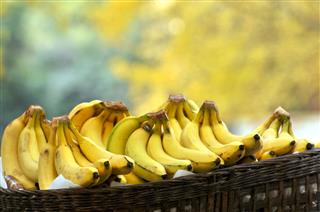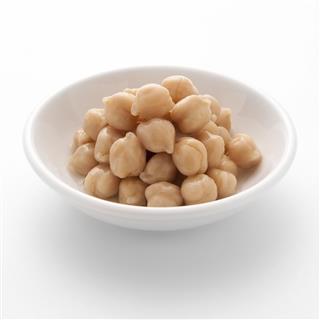
Iron is an essential mineral that the body needs to make hemoglobin. Following a diet that is rich in iron helps in preventing iron deficiency anemia, which causes symptoms such as lack of energy, shortness of breath, headache, irritability, etc. To help you identify foods that are rich in this mineral, a chart of iron-rich foods has been provided in this NutriNeat article.
Iron is a mineral that performs several important functions. It is required for the production of hemoglobin, a protein in the red blood cells that is responsible for carrying oxygen. Furthermore, adequate iron levels in the body ensure healthy organ and muscle function, and provide energy required to perform daily activities. It plays a vital role during the developmental stages in human life. An iron deficiency may lead to a condition called anemia, which is marked by symptoms such as fatigue and weakness. The incidence of anemia is higher in women, as women lose blood during the monthly menstrual cycle. Also, their body needs more iron when they are pregnant or breastfeeding. The following sections provide the recommended dietary intake of iron for men and women, and a chart that will provide information on the amount of iron present in different food items.
Recommended Daily Intake of Iron
Up to 6 months, the RDA for iron is 0.27 mg. Infants in the age group of 7-12 months require 11 mg of iron. Children in the age group of 1-3 years, 4-8 years, and 9-13 years require 7 mg, 10 mg, and 8 mg, respectively. The following table provides information on the recommended levels of iron for men and women.
| Gender | Age Group | Required Amount of Iron |
| Males | 14-18 yrs. | 11 mg |
| 19 yrs. and above | 8 mg | |
| Females | 14-18 yrs. | 15 mg |
| 19-50 yrs. | 18 mg | |
| 51 yrs. and above | 8 mg | |
| During Pregnancy | – | 27 mg |
| During Breastfeeding | 18 yrs. and Below | 10 mg |
| 19 yrs. and Above | 9 mg |
Sources of Iron
The following chart provides information about various food items that are rich in iron. You may notice that some of the foods are not as high in iron as others, but they can be used to create an interesting variety in your meals, which in turn would help increase your iron intake.
Important Note: Before you start including any of the foods provided in this list, have your iron levels checked. Increase your iron intake only after consultation with your doctor or a qualified nutritionist.
| Meat Sources | |||
| Food | Amount | Iron Content (mg) | |
| Liver (Chicken/Beef) | 100 g | 8.8 | |
| Beef (Cooked) | 100 g | 5.5 | |
| Turkey Meat (Cooked) | 100 g | 4.8 | |
| Tuna Fish (in Oil) | 100 g | 1.2 | |
| Chicken (Cooked) | 100 g | 0.8 | |
| Sardines | 100 g | 4.0 | |
| Oysters (Cooked) | 100 g | 8.5 | |
| Egg | 1 | 1.0 | |
| Vegetable Sources | |||
| Spinach | 1 cup | 4.0 | |
| Peas (Cooked) | 1 cup | 3.0 | |
| Collard Greens/Kale/Beet/Turnip Greens | 1/2 cup | 2.0 | |
| Potato | 1 Large | 1.4 | |
| Green Beans (Cooked) | 1 cup | 1.2 | |
| Broccoli (Lightly Boiled) | 100 g | 1.0 | |
| Bok Choy (Cooked) | 1/2 cup | 0.7 | |
| Fruit (Fresh/Dried) Sources | |||
| Strawberries | 1 cup | 1.5 | |
| Watermelon | 6″ x 1/2″ slice | 3.0 | |
| Banana | 1 cup | 1.0 | |
| Raisins | 1 cup | 5.1 | |
| Prunes | 1 cup | 3.8 | |
| Dried Apricots | 1 cup | 7.2 | |
| Dried Peaches | 1 cup | ||
| Dried Dates | 4 | 1.7 | |
| Grains/Cereals | |||
| Bread (White/Whole Wheat) | 1 slice | 0.5 | |
| Cereal (Dry) | 3/4 cup | As on Label | |
| Cereal (Cooked) | 1/2 cup | 0.7 | |
| Tortillas | 1 | 1.0 | |
| Wheat Germ | 1/2 cup | 4.0 | |
| Bran Muffin | 1 | 1.5 | |
| Oatmeal | 100 g | As on Label | |
| Beans and Legumes | |||
| Soy Beans (Cooked) | 1/2 cup | 4.4 | |
| Red/Kidney/Pinto Beans (Cooked) | 1 cup | 5.0 | |
| Black-Eyed Peas (Cooked) | 1 cup | 4.0 | |
| Garbanzo Beans | 1/4 cup | 2.4 | |
| Lentils (Cooked) | 1 cup | 3.0 | |
| Other Sources | |||
| Pumpkin Seeds | 1 oz. | 3.2 | |
| Nuts | 1/3 cup | 0.5 – 2.0 | |
| Tofu | 4 oz. | 2.3 | |
| Semolina (Cooked) | 1/2 cup | 5.5 | |
| Blackstrap Molasses | 1 tbsp | 5.0 | |
You may also take a look at this list of iron-rich food for vegans. An important tip to keep in mind, is to consume a good amount of food items that are rich in vitamin C, while adhering to an iron-rich diet. This will help increase the absorption of iron by the body, thereby effectively increasing the levels in those who are deficient in this mineral.
Disclaimer: This NutriNeat article is for informative purposes only and does not, in any way, intend to replace the advice of a medical expert.













